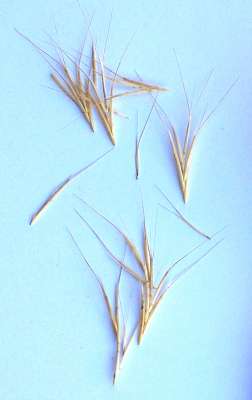
If you find your dog shaking its head violently from side to side, and pawing its ear, this could mean that it has a grass seed in its ear which, if not removed, can cause infection and even perforate the eardrum.
During the months of May and June in particular, foxtail barley and similar species of grass growing in the PO can be very harmful to your dog (and to your wallet if you have to visit the vet) as the seeds can become embedded in the ear or the paw, or even eyes and nose.

Take particular care where grass has been cut, and had time to dry.
Foxtail is a common annual grass which grows up to three feet tall. As foxtail matures, seeds are formed at the top of the stalk. The seeds are grouped in a bushy stem which resembles the tail of a fox, giving the grass the name of “foxtail”.

When mature, the seeds detach easily from the plant and can cling to clothing, fur, and hair or penetrate the skin or most orifices.
Foxtail seeds are very tiny so vets usually go by symptoms.
✌ If in the nasal cavity, the dog sneezes repeatedly and violently often hitting the nose on the floor. If a bloody discharge is noticed assume it’s a foxtail seed.
✌ If in the eye, the dog paws at the eye and the eye waters. If an eye is glued shut it is most likely a foxtail seed.
✌ If the seed is in the ear the dog shakes its head violently from side to side. Sometimes the dog paws a the eyes or ear, shaking the head and squints.
✌ In the mouth foxtail seeds can cause gagging or difficulty swallowing. If the seed gets caught between the teeth, in the gums, back of throat, or tongue problems can result.
✌ If the seed lodges in the paw or under the coat a lump will form that is painful to the touch. Other symptoms include rubbing the head on the ground and going round in circles, licking or biting at the rectum or other body parts, or yelping for no obvious reason.
Always brush and inspect your dog’s coat after being in grassy areas. Dogs with long hair are even more likely to attract the seeds than shorthaired breeds.
Examine your dog’s eyes and ears.

